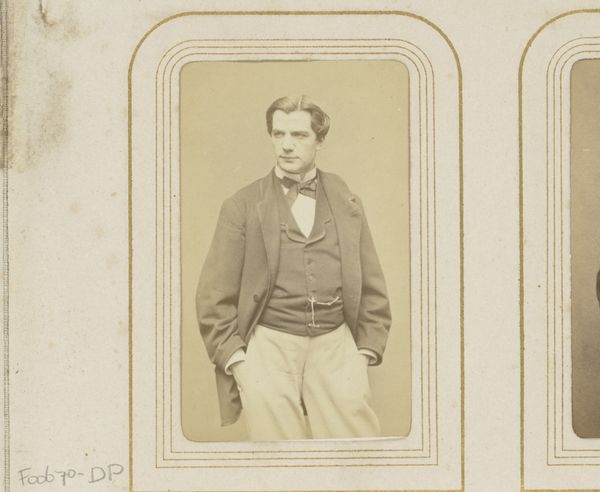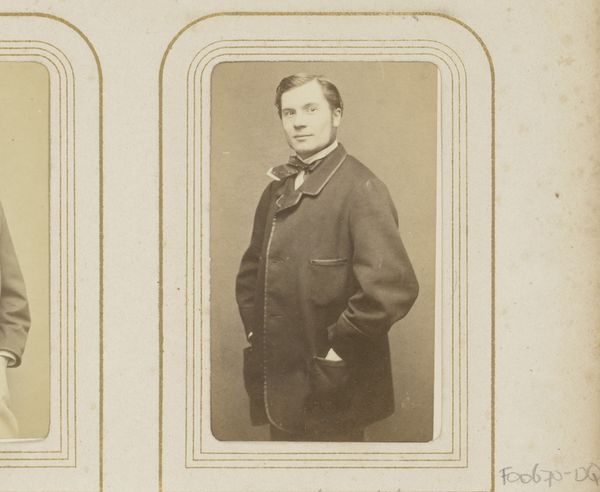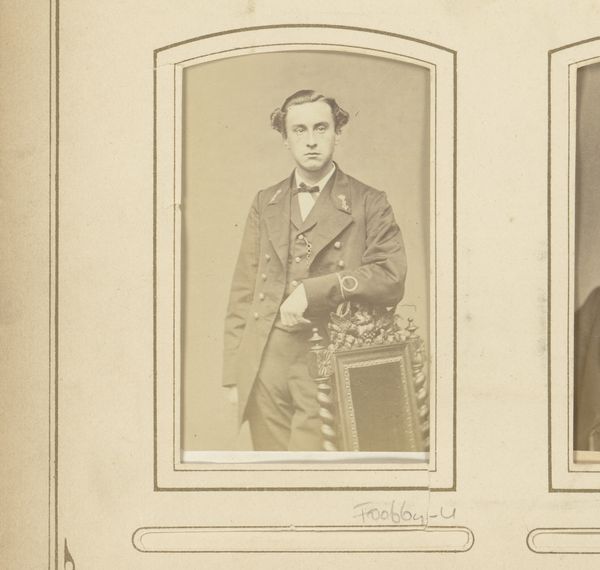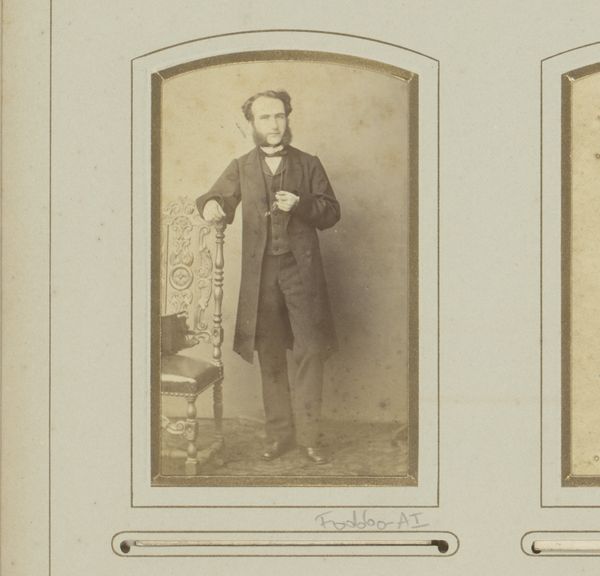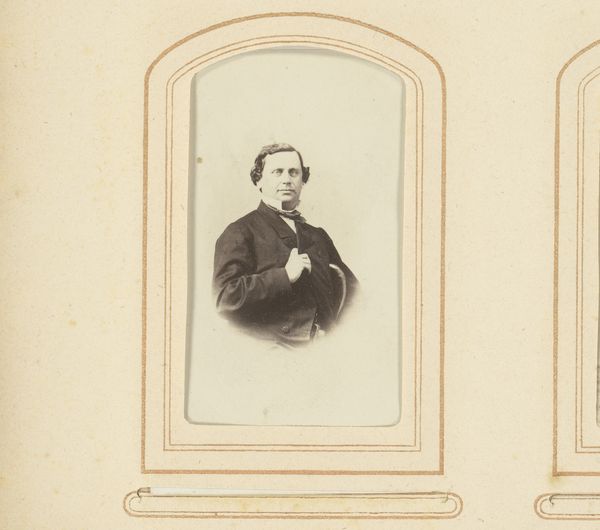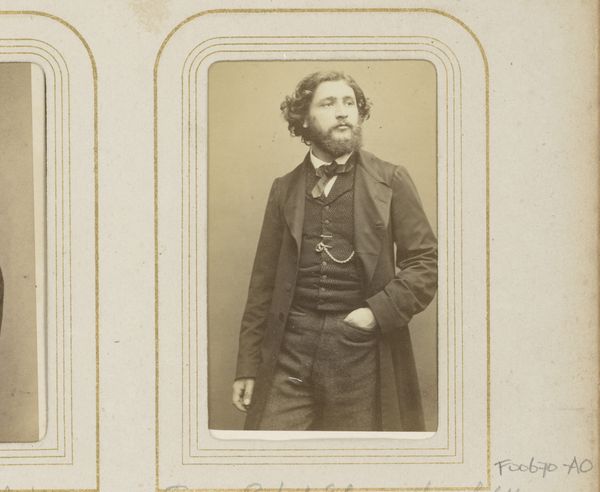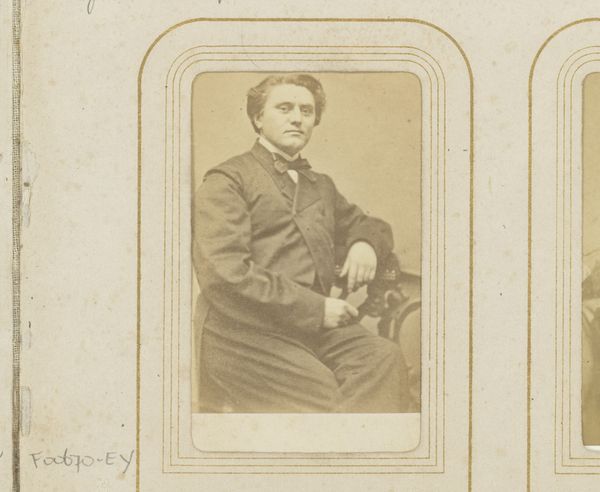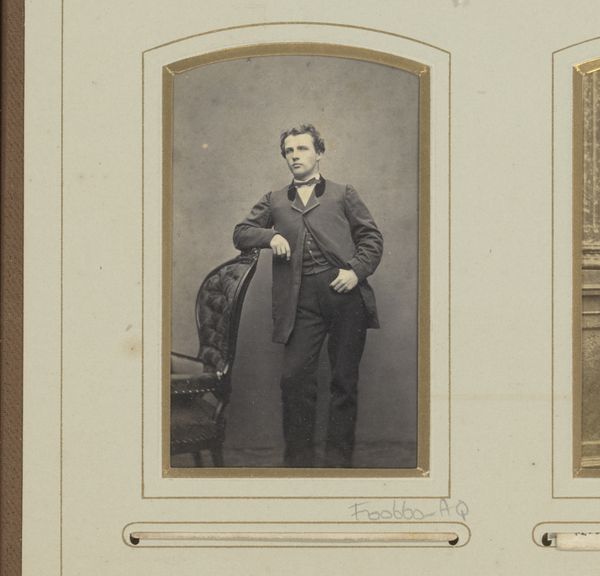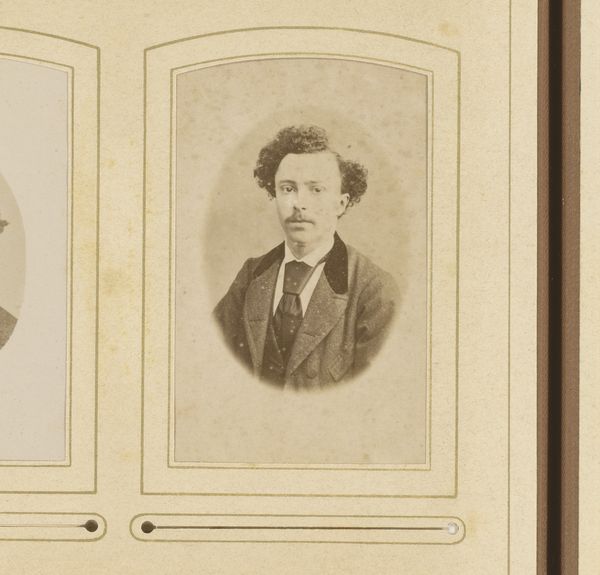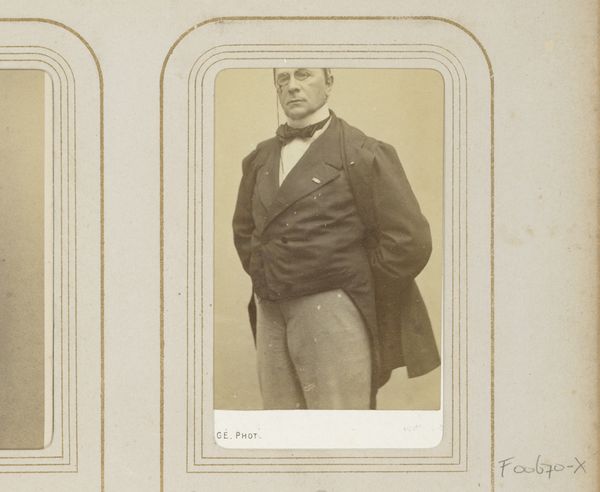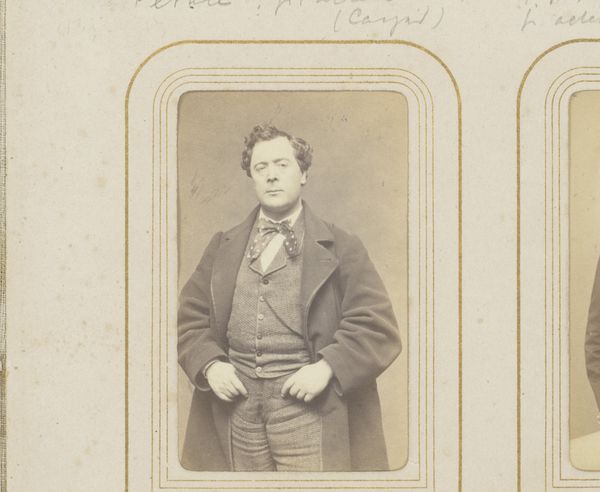
photography, gelatin-silver-print
#
portrait
#
charcoal drawing
#
photography
#
historical photography
#
gelatin-silver-print
#
19th century
Dimensions: height 84 mm, width 51 mm
Copyright: Rijks Museum: Open Domain
Georges Mathurin Legé's "Portret van Hippolyte Landrol" is a photographic study in sepia tones, encased within a decorative frame. The sitter, Landrol, is carefully posed, his gaze directed off-center, and his body angled slightly to create depth. The composition, tightly cropped, emphasizes the textures of his clothing and the subtle gradations of light across his face. The formal arrangement here speaks to a broader cultural interest in portraiture as a means of capturing and conveying identity. Notice the interplay of light and shadow that models Landrol’s features. Legé’s handling of light is not merely descriptive; it serves to highlight certain aspects of his personality. The effect is to invite the viewer into a complex relationship with the subject. Consider the photograph’s material presence, a small, tangible object designed for intimate viewing. This physicality underscores its function as a vehicle for memory and personal connection. The use of sepia tones, rather than full color, reinforces the sense of distance and nostalgia. As you move on, reflect on how Legé uses the formal constraints of the photographic medium to evoke a rich, multifaceted sense of self.
Comments
No comments
Be the first to comment and join the conversation on the ultimate creative platform.
